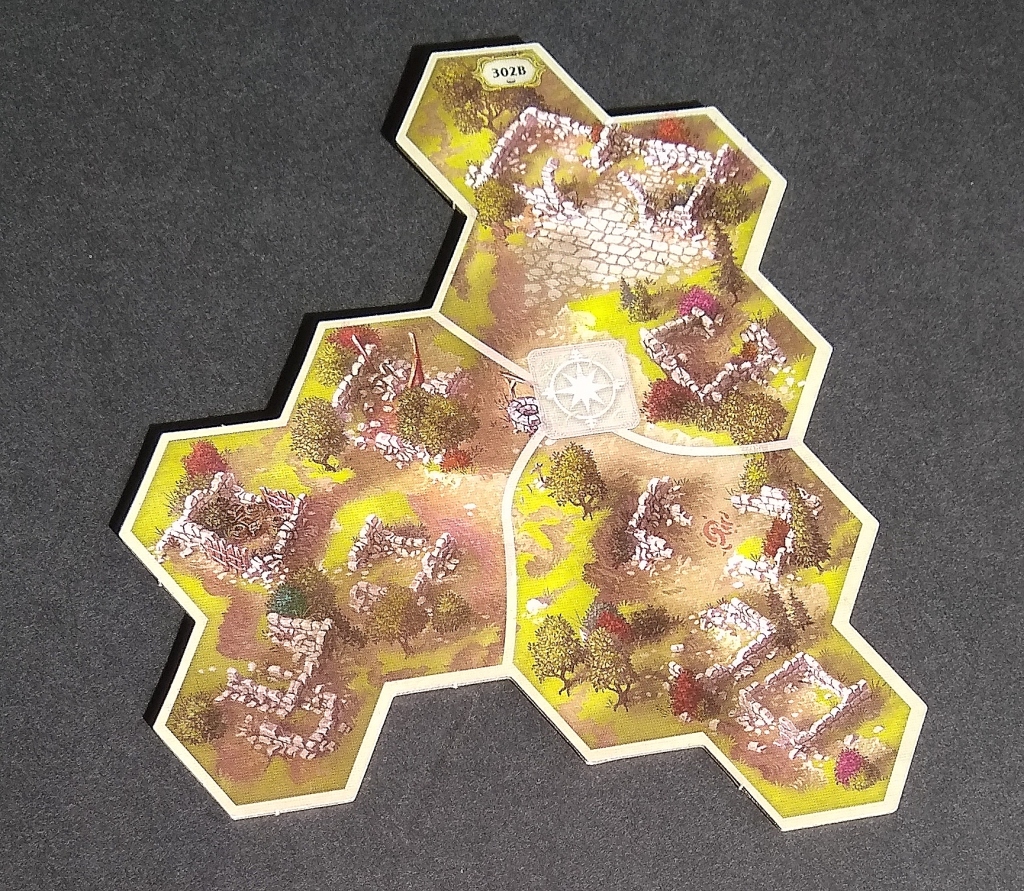As a child, I often spent long periods of time staring at maps. They entranced me, drawing me into visions of distant lands and peoples. Maybe that’s why I really appreciate game boards that depict maps with regions for players to explore and inhabit.
The modular board included in Lord of the Rings: Journeys through Middle Earth by Fantasy Flight Games fits the bill nicely. It depicts rivers, seas, hills, ancient forests and open vales. The colors are rich and engaging, the modular pieces vary considerably from one another, and they include a second autumnal scene on the reverse. The board scratches my “map itch” quite well.

A variety of buildings appear on the map, most commonly ruins of various sorts. These are rendered in perspective (probably isomorphic or something similar), rather than depicted in a straight top-down view. This contrasts with traditional Dungeons & Dragons maps, which are most commonly depicted from top-down. (“Real world” political maps usually use a top-down representation, while physical maps use shading to hint at topographic variation, such as mountains and rifts.)
I mention it because the theme and mechanics of LOTR: Journeys are about the travels of Frodo and friends through a land of nasty creatures. Much like D&D, the game includes many stat checks (which the game implements with card draws rather than with dice as in D&D). Much like in D&D, players collect items that boost their stats and give other special powers. Much like in D&D, the players control miniatures, which are detailed, varied and fun to touch.

The small downside of rendering a map in perspective is that now the map is only “right-side up” for one player who happens to sit on a particular side of the table. (Sid Meier’s Civilization tabletop game is an example of what happens when players place tiles with perspective onto a map with perspective, resulting in a mixture of different building orientations during gameplay.)
On the other hand, a big benefit of rendering the map in perspective is the potential for more viewer immersion. The buildings look more real because the ability to see them from the side creates opportunities for interesting shadows and highlights.
Another benefit is the consistency between the map and the pieces upon the map. The pieces are 3D objects that players can touch and hold, so it’s nice that the map’s art makes the buildings also appear as close to 3D as a 2D surface can achieve.
Perhaps for these reasons, most games with miniature dudes on a board tend to depict the map in perspective. For example, Scythe is a great example of such a map (though I’m not sure it uses exactly the same projection as LOTR).
Nonetheless, I also like the traditional top-down representation found in those “real world” maps that I loved in my youth, and I’ll keeping my eyes open for tabletop games with similar map renderings.
Do you know of any games that render maps in unusual or interesting perspectives?

2 thoughts on “Join Me in a Quick Tour Through Middle Earth (LOTR Journeys)”